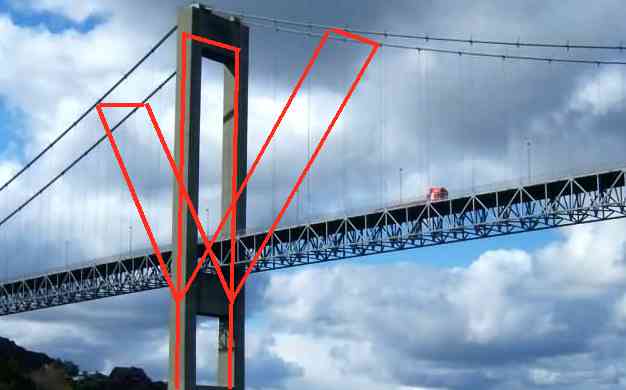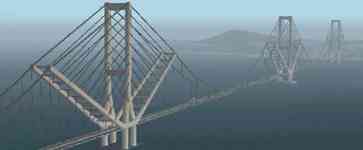Multiple Piers

Slanting struts
|
Apologies for the primitive nature of this diagram.
Use of additional slanting piers means that the bridges
cables are stabilised by the towers slightly nearer to the
bridge's central point.
The overall height of the bridge is reduced slightly in the
process.
Each tower has to bear about one third of the force from the
cables that the original single tower had to bear - so the
cost is not three times as large as using a single tower,
but is broadly comparable.
Additionally, all the towers can be made slightly shorter
than the original one, resulting in some savings.
As a consequence of this idea, the stresses the cables have
to endure at the top of the piers are reduced.
The three towers can profitably be connected by crossed
struts - again assisting with stability considerations of
the entire structure.
I observe that slanting piers were included in one of the
old proposals for a Gibraltar bridge:

Gibraltar bridge proposal
|
Here the struts extend a substantial distance horizontally -
in what appears to be primarily an attempt to reduce the
tensile-only span.
The slanting struts in this design also act as anchors for
the vertical support cables.
I should add that there are plenty of problems associated
with the idea of additional slanting slanting.
It may sometimes prove beneficial overall - but I
think it would need an exhaustive cost-benefit analysis to
see if it's worth it.
I do think the idea is worthy of further
investigation, though.
|